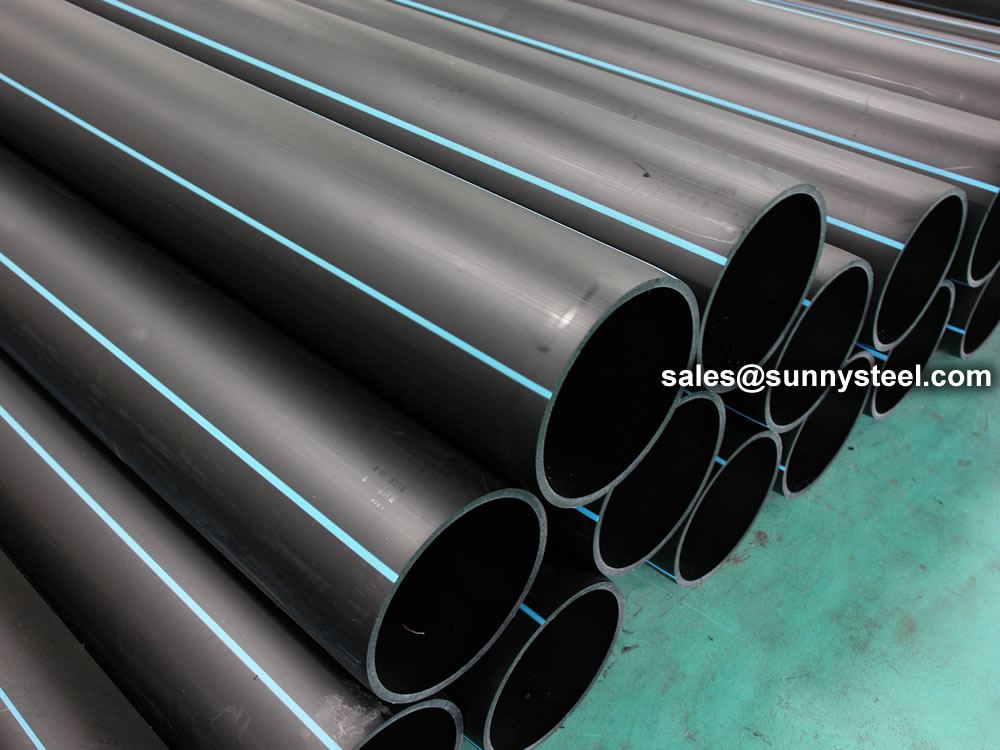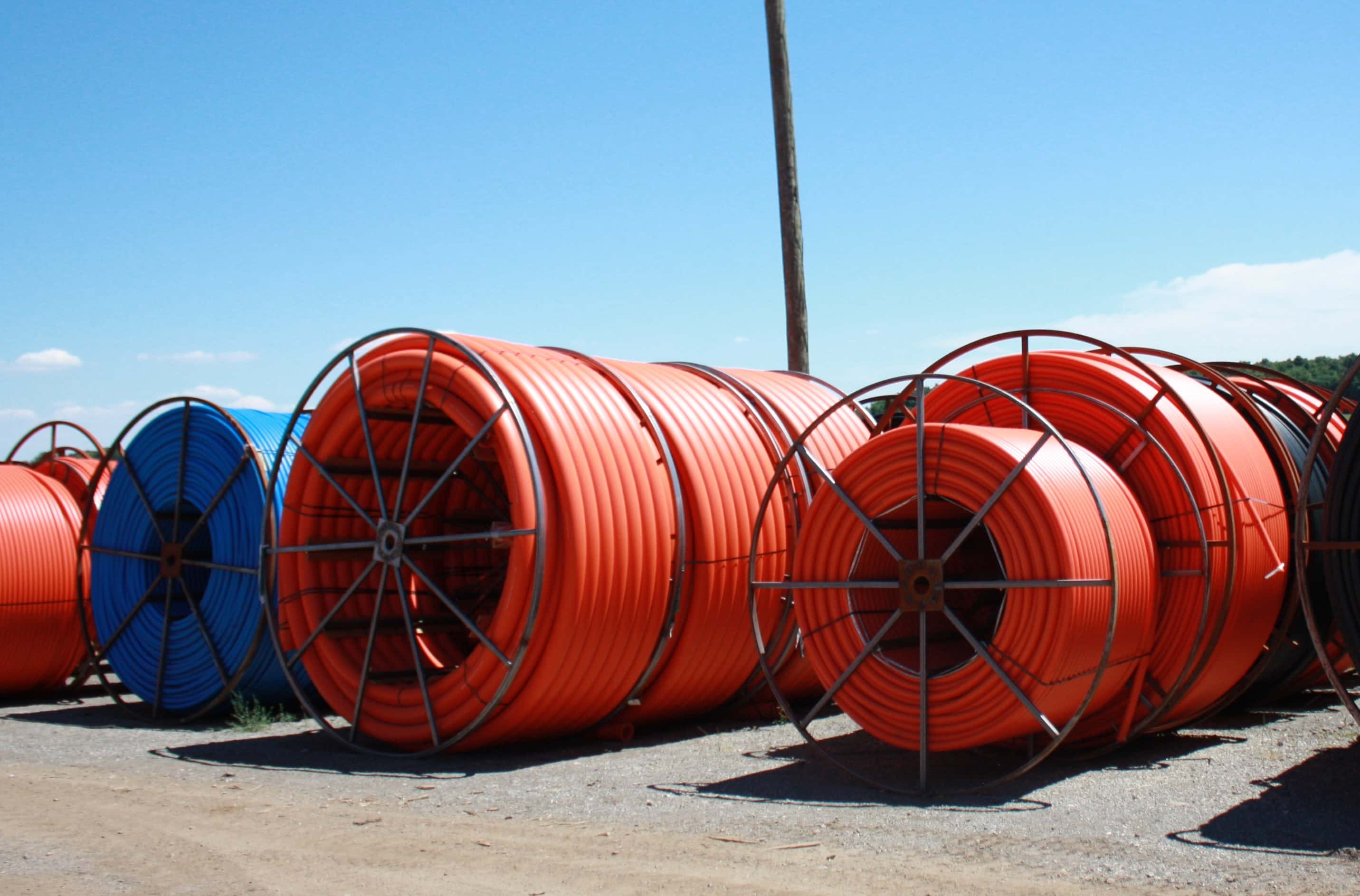American Plastics HDPE Pipe for Oilfield: Efficiency in Harsh Environments
Wiki Article
Explore the Manufacturing Process Behind High-Quality HDPE Pipeline and Its Applications
The production procedure of high-quality HDPE pipelines is elaborate and methodical. It starts with the choice of raw products that improve performance. Following this, ethylene goes through polymerization to create resin, which is then shaped with extrusion. Quality assurance is vital, ensuring that the last item satisfies strict criteria. The journey of HDPE pipes does not finish with production. Their applications across various industries expose a broader significance worth taking a look at.Understanding HDPE: Characteristics and Advantages

High-density polyethylene (HDPE) is a functional polycarbonate understood for its durability and resistance to different environmental factors. This material exhibits superb tensile stamina, making it appropriate for requiring applications. Its low-density framework adds to a lightweight product, facilitating ease of dealing with and setup. HDPE likewise showcases exceptional resistance to chemicals, which decreases degradation when subjected to severe substances.
The product's low dampness absorption even more enhances its long life, making it excellent for use in pipes and storage tanks. Furthermore, HDPE is resistant to ultraviolet (UV) radiation, ensuring that products maintain their stability also when subjected to sunlight. Its adaptability allows for the production of complex shapes without compromising strength. The eco-friendly nature of HDPE, frequently stemmed from recycled materials, adds to its allure, advertising lasting methods in production. In general, these homes and benefits make HDPE a recommended option for various industrial and consumer applications.
Raw Product Selection for HDPE Manufacturing
The choice of resources for HDPE manufacturing is crucial to validate the last item satisfies the preferred specifications and top quality criteria. High-density polyethylene (HDPE) is primarily created from polymerized ethylene, originated from fossil fuels such as natural gas or petroleum. The quality of these feedstocks greatly influences the mechanical and thermal homes of the last HDPE.Ingredients also play a significant function in improving HDPE's performance, consisting of antioxidants, UV stabilizers, and colorants, which enhance longevity and resistance to ecological aspects. The option procedure should think about not just the chemical composition of the raw materials yet likewise their handling qualities to ensure reliable production.
The sourcing of raw materials must focus on sustainability and compliance with environmental laws, as accountable practices are essential in today's market. Ultimately, careful raw material selection lays the structure for producing top quality HDPE pipes ideal for varied applications.
The Extrusion Refine: Shaping HDPE Pipeline
The extrusion process plays a crucial role fit HDPE pipelines, starting with meticulous material preparation methods that guarantee suitable flow and consistency. Equally essential is the design of the die, which directly influences the final measurements and surface area high quality of the pipe. Together, these elements add greatly to the efficiency and high quality of HDPE pipe production.Product Prep Work Strategies
Reliable manufacturing of HDPE pipes begins with thorough product prep work methods, especially the extrusion process. Throughout this stage, high-density polyethylene material is first dried out to get rid of moisture, guaranteeing perfect flow attributes. The resin is then fed right into the extruder, where it undertakes heating and melting, transforming into a viscous state. This heating procedure is meticulously managed to preserve the material's honesty and performance. The liquified HDPE is compelled through a die, forming it into a continuous pipeline form. Appropriate temperature level management during extrusion is essential, as it straight influences the product's residential properties and the end product top quality. When formed, the HDPE pipeline is cooled down and reduced to defined lengths, ready for succeeding processing and applications.Die Layout Importance
Accuracy in die layout plays an essential function in the extrusion process of HDPE pipelines. The die acts as the last shaping tool, straight affecting the pipeline's dimensions, wall surface density, and surface area finish. A properly designed die guarantees consistent material flow, decreasing flaws such as irregularities and weak points. The geometry of the die should be maximized to fit the specific homes of HDPE, including its viscosity and thermal actions during extrusion. In addition, the cooling price of the product as it passes with the die can substantially influence the pipeline's architectural stability. Spending in sophisticated die technology is essential for makers intending to create top quality HDPE pipes that fulfill industry standards and customer expectations.Quality Control Procedures in HDPE Production
Although numerous variables influence the top quality of HDPE pipeline production, reliable high quality control measures are important to ensure consistency and reliability in the last item. Trick quality assurance methods include strenuous material evaluation, verifying that the raw polyethylene satisfies established standards for purity and thickness. Throughout the extrusion process, criteria such as temperature level, stress, and cooling time are very closely kept track of to keep dimensional accuracy and structural integrityOn top of that, post-production screening is essential; suppliers often conduct hydrostatic examinations to analyze the pipe's stamina and resistance to pressure. Aesthetic assessments for surface defects better enhance top quality assurance. Accreditation from appropriate standards organizations, like ASTM or ISO, offers an extra layer of trustworthiness. By implementing these complete quality control actions, producers can lessen issues, boost performance, and guarantee that the HDPE pipes meet the particular needs of different applications, eventually leading to customer complete satisfaction and depend on in the product.
Applications of HDPE Pipe Across Industries
HDPE pipelines are used throughout various fields as a result of their resilience and convenience. In water distribution systems, they ensure effective delivery, while in wastewater management, they provide trusted solutions for waste transport. In addition, agricultural watering networks gain from HDPE's resistance to rust and versatility, making it an excellent selection for contemporary farming methods.
Water Circulation Systems
A substantial variety of industries count on high-density polyethylene (HDPE) pipelines for effective water circulation systems. Recognized for their toughness and resistance to rust, HDPE pipelines are extensively used in community water system networks, farming irrigation, and industrial applications. Their light-weight nature facilitates easy handling and setup, decreasing labor prices and time. Furthermore, HDPE pipes can accommodate numerous pressure degrees, making them ideal for both low and high-pressure systems. custom hdpe pipe manufacturing Midland TX. The adaptability of the material enables seamless assimilation right into existing infrastructure, reducing the requirement for substantial excavation. In addition, HDPE's resistance to chemical leaching guarantees that the water supplied continues to be risk-free and tidy, making it an excellent choice for keeping the quality of drinkable water throughout various marketsWastewater Management Solutions
Effective water circulation systems additionally lead the way for cutting-edge wastewater administration remedies, where high-density polyethylene (HDPE) pipelines play a considerable role. Popular for their toughness and resistance to deterioration, HDPE pipes are suitable for carrying wastewater in numerous settings. Their versatility enables easy installation in complex atmospheres, minimizing the need for considerable excavation. Additionally, HDPE's smooth interior surface decreases rubbing, boosting flow prices and performance. These pipelines are additionally resistant to chemical leaching, guaranteeing that contaminants do not compromise the surrounding setting. Industries, districts, and therapy facilities significantly rely upon HDPE pipes for their reliability and long poly fittings life, making them a preferred choice for modern-day wastewater management systems. This versatility underscores the important significance of HDPE pipelines throughout countless applications.Agricultural Irrigation Networks
Agricultural irrigation networks profit significantly from the use of high-density polyethylene (HDPE) pipes, which offer reliable and reliable water shipment to crops. HDPE pipelines are lightweight, making them easy to move and set up, while their flexibility permits for numerous configurations in diverse surfaces. These pipes demonstrate superb resistance to deterioration, chemicals, and UV radiation, ensuring toughness in rough agricultural environments. Furthermore, their smooth interior surface area minimizes friction loss, enhancing water flow and reducing power costs connected with pumping. The longevity of HDPE pipelines, usually exceeding 50 years, adds to lower upkeep and substitute expenses. Consequently, farmers significantly rely upon HDPE pipes to enhance irrigation effectiveness and promote lasting agricultural methods, eventually leading to improved crop yields and source preservation.Future Fads in HDPE Pipe Modern Technology
As the demand for lasting and effective framework grows, improvements in HDPE pipeline modern technology are positioned to change numerous industries. Emerging fads consist of the combination of smart technologies, such as sensing units and IoT abilities, which help with real-time tracking of pipeline problems, minimizing upkeep costs and protecting against leaks. Furthermore, the growth of advanced production strategies, such as 3D printing, is enabling the production of complicated, tailored pipeline layouts that satisfy details project needs.The focus on recycling and circular economic situation methods is driving the advancement of HDPE pipelines made from recycled products, boosting sustainability. Enhanced jointing methods, such as electro-fusion and mechanical fittings, are also improving setup effectiveness and reliability. Finally, the growing emphasis on ecological guidelines is pushing manufacturers to adopt greener manufacturing procedures, making sure that HDPE pipelines not just fulfill market requirements find more info yet also promote an even more lasting future for infrastructure growth.
Often Asked Inquiries
How Does HDPE Compare to Various Other Plastic Products?
HDPE exceeds numerous other plastic materials regarding sturdiness, chemical resistance, and flexibility. Its reduced density and high tensile stamina make it perfect for different applications, frequently going beyond alternatives in both performance and long life.What Are the Ecological Influences of HDPE Manufacturing?
The environmental impacts of HDPE manufacturing consist of greenhouse gas emissions, energy intake, and possible air pollution from manufacturing procedures. Additionally, inappropriate disposal can lead to soil and water contamination, raising worries regarding lasting environmental impacts.Can HDPE Pipeline Be Recycled?
Yes, HDPE pipelines can be reused. Several centers accept used HDPE for processing, changing it right into new products. This reusing adds investigate this site to sustainability efforts, decreasing plastic waste while conserving sources and power in the production cycle.What Is the Lifespan of HDPE Pipeline?

How Do Temperature Level Variants Influence HDPE Pipeline Performance?
Temperature level variants substantially influence HDPE pipeline efficiency, influencing adaptability and strength. Heats can bring about softening, while low temperature levels might create brittleness, ultimately influencing the pipe's durability and viability for numerous applications in varied environments.Report this wiki page